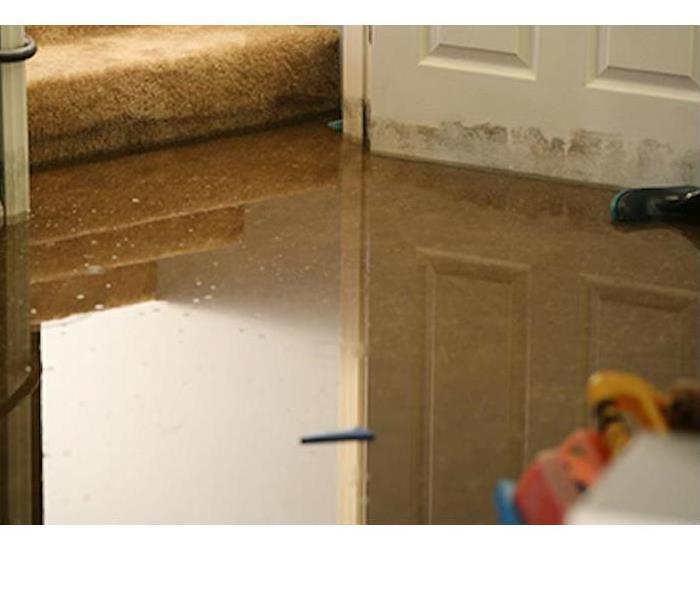Three Types of Contaminated Water and Restoration Steps
10/6/2021 (Permalink)
When evaluating the types of water damage and how they affect an emergency water removal situation on a property, it helps to know that water losses fall into three categories:
Category 1: Clean Water
Category 1 water is from a clean source like a broken water supply line or leaking faucet. If not treated quickly, this water can turn into category 2 or 3, depending on length of time, temperature, and contact with surrounding contaminants.
Category 2: Gray Water
Category 2 water is contaminated and could cause discomfort or illness. Examples include washing machine overflow; toilet overflow with some urine, but no feces; or dishwasher overflow.
- May contain bacteria and viruses
- Can quickly degrade into category 3 if left untreated
Category 3: Black Water
Category 3 water is grossly contaminated and could cause severe illness or death if ingested and any contact should be avoided. Examples include flooding from rivers or streams, water from beyond the toilet trap, water from the toilet bowl with feces, or standing water that has begun to support microbial growth.
- May contain untreated sewage, harsh chemicals, and microbes
- Water from flooding rivers or sewer backup
Sewage cleanup must not be taken lightly. Serious long term health issues to adults, children and pets may occur due to bacteria, viruses and even parasites.
Restoration Procedures
Evaluation
Water damage restoration is often prefaced by a loss assessment and evaluation of affected materials into the categories described above. The damaged area is inspected with water sensing equipment such as moisture meters and other infrared tools in order to determine the source of the damage and the possible extent of areas affected.
Mitigation, Restoration & Drying
Emergency mitigation services are the first order of business. Controlling the source of water, removal of non-salvageable materials, water extraction and pre-cleaning of impacted materials are all part of the mitigation process. Restoration services would then be rendered to the property in order to dry the structure, stabilize building materials, sanitize any affected or cross-contaminated areas, and deodorize all affected areas and materials. After the labor is completed, water damage equipment including air movers, air scrubbers, dehumidifiers, wood floor drying systems, and sub-floor drying equipment is left in the residence. The goal of the drying process is to stabilize the moisture content of impacted materials below 15%. We at SERVPRO return at regular time intervals, preferably every twenty-four hours, to monitor the equipment, temperature, humidity, and moisture content of the affected walls and contents.
Reconstruction Services
Once dried we can commence to perform any reconstruction or remodeling services desired by the property owner. These services may be limited to replacing drywall, baseboards, and trim boards, or may entail a complete renovation if desired--including floors, cabinetry, appliances, countertops, painting, and a host of related services,
If you have water damage, don't delay. Take immediate action. Call SERVPRO of Jacksonville Northwest at 904.256.4894.


 24/7 Emergency Service
24/7 Emergency Service
